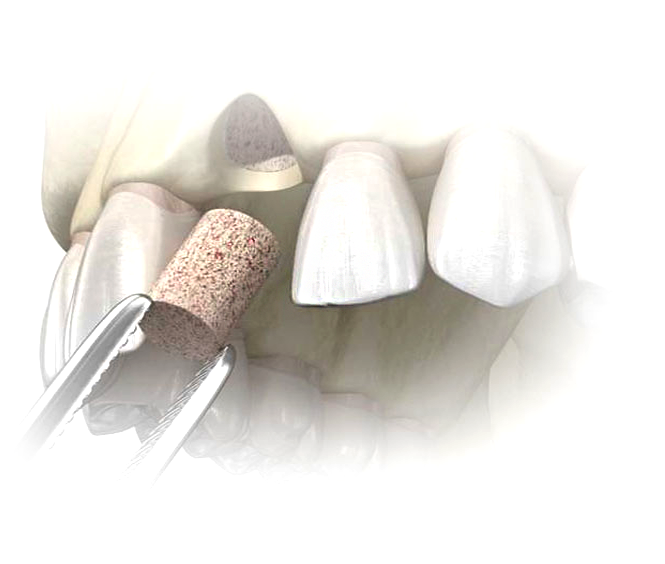A bone graft is similar to other types of tissue grafts. For example, skin grafts are quite common and theoretically similar to the process of bone grafting. When a patient requires additional bone, extra bone from another area of the body such as the hip or bone from a tissue bank is surgically attached to the jawbone. After the healing process is complete, Dr. Soares will begin the implantation process.
Bone grating is often required along the upper jawbone. This is because the region of the upper jaw is located near the sinus passages and is typically too thin to support an implant. By thickening and widening the jawbone near the sinus passageway, Dr. Soares can create the necessary bone mass to replace teeth in the upper jaw. Bone grafting increases a patient’s likelihood of a successful implant treatment.
A dental bone graft adds volume and density to your jaw in areas where bone loss has occurred. The bone graft material may be taken from different sources:
-From your own body (autogenous)
-Purchased from a human tissue bank (allograft)
-Purchased from an animal tissue bank (xenograft).
-In some instances, the bone graft material may be synthetic (alloplast)
Once placed, the grafting holds space for your body to do rebuild you own bone. It acts as a scaffold on which your own bone tissue can grow and regenerate.
In some cases, your surgeon may combine a dental bone graft with platelet rich plasma (PRP). They will use a sample of your own blood to promote healing and tissue regeneration.
By improving bone density in the jaws, patients can enjoy a complete smile after tooth loss. Instead of having limited options for replacing teeth such as bridges or dentures, this procedure makes receiving dental implants possible for more patients than ever before. A bone graft can help support teeth that are still intact, thus reducing the incidence of further tooth loss.
If you are interested in reviewing your tooth replacement options, we invite you to schedule a consultation with Dr. Soares. At your appointment, we will conduct an oral examination and review X-rays to determine your overall oral health as well as the density of your jawbones. If you need a bone graft before receiving dental implants, our team will be happy to discuss this treatment option in greater detail and answer any questions you might have.
Socket preservation.
This type of graft is placed in the socket immediately after a tooth is removed. It fills the void left behind by the missing root and prevents the sides of the socket from caving in.
Ridge augmentation. When teeth are missing for a long period of time, the supporting jawbone may be thinner than it was before. Ridge augmentation increases the width and volume of the jawbone so it can provide a stable foundation for implants .
Sinus lift. The maxillary sinuses sit just above your upper back teeth. When missing, the sinuses can drop down and invade the space once occupied by the teeth roots. Implants should not be placed into the sinuses. To address this problem, your surgeon can perform a sinus lift. This procedure raises the sinus back to its proper position. Grafting material is placed underneath the sinus, creating a solid foundation for dental implants later on.A dental bone graft adds volume and density to your jaw in areas where bone loss has occurred. The bone graft material may be taken from different sources:-From your own body (autogenous)









